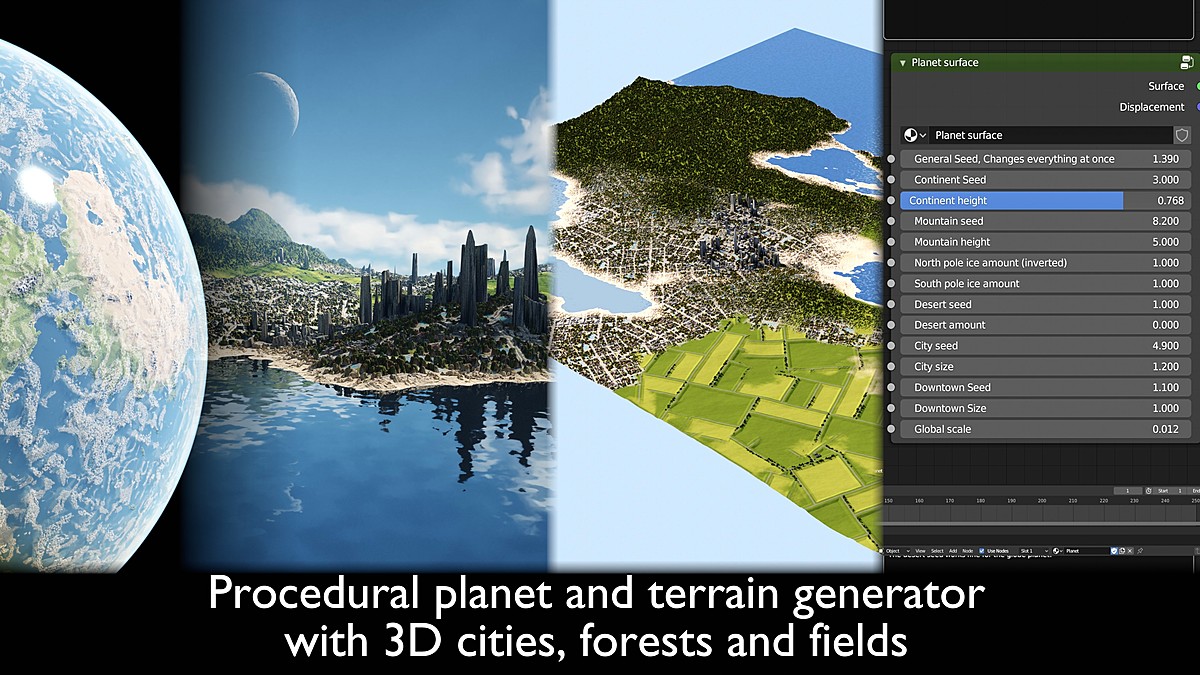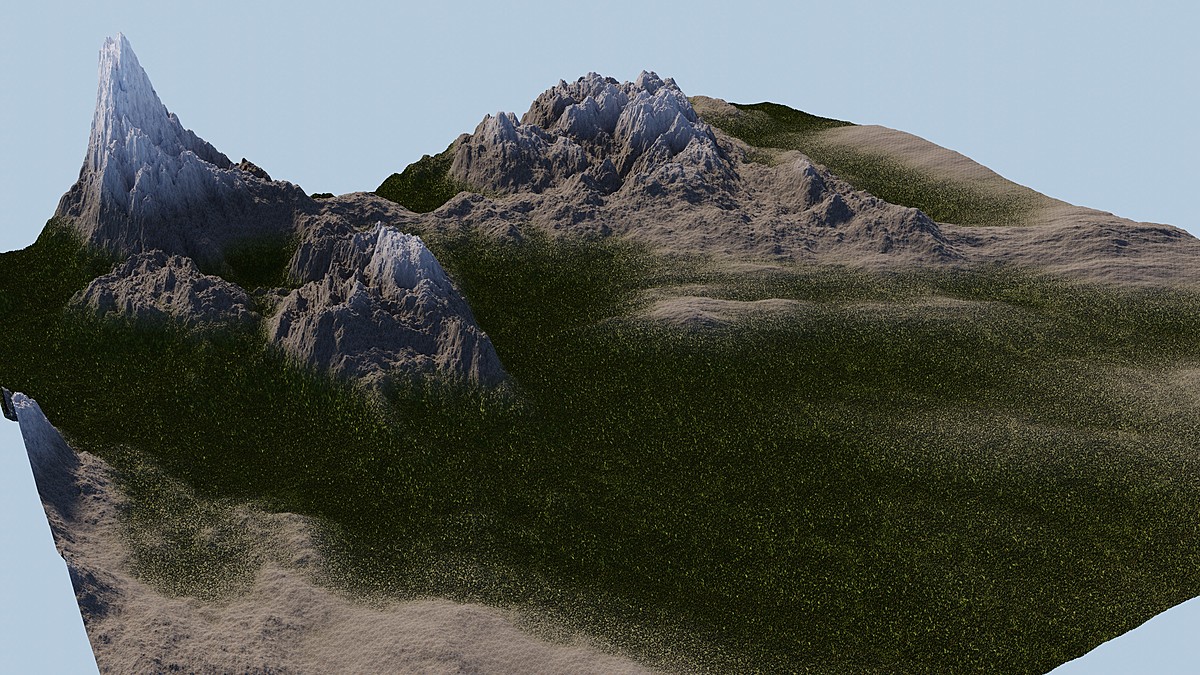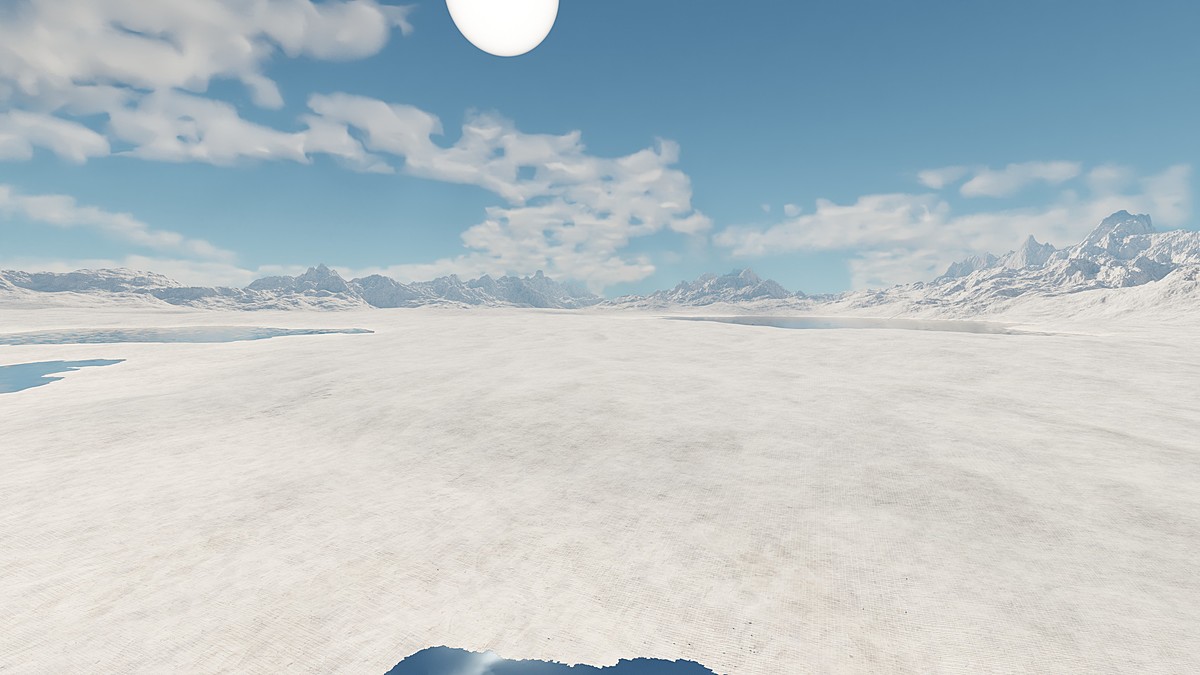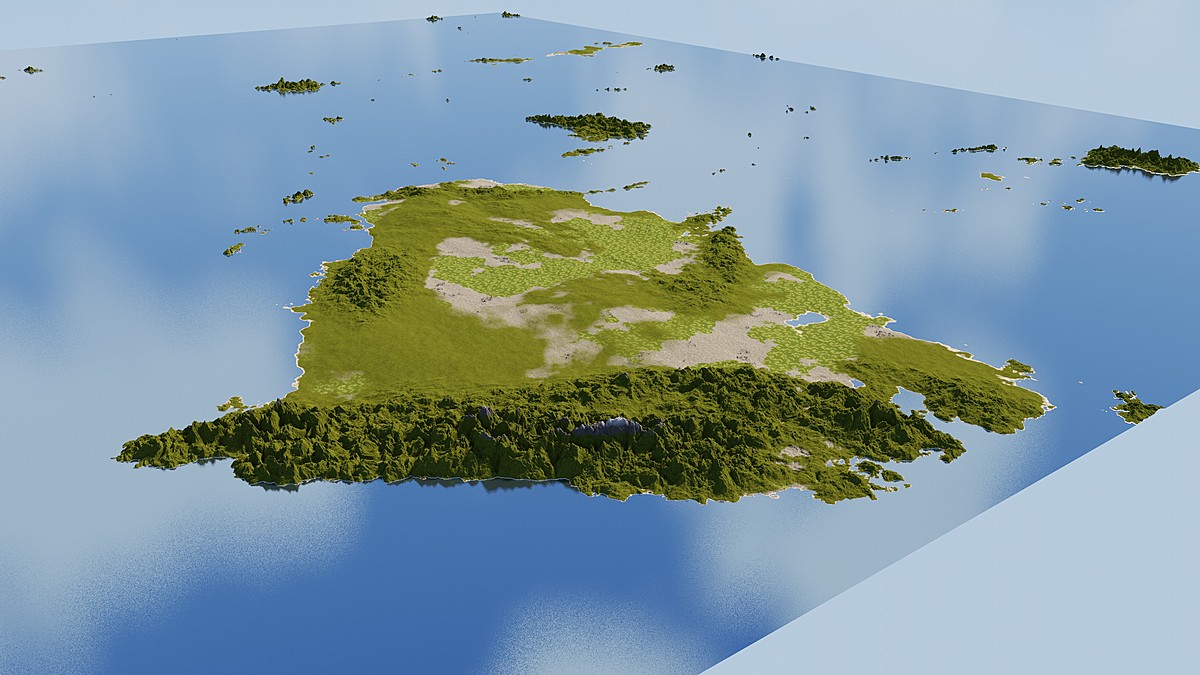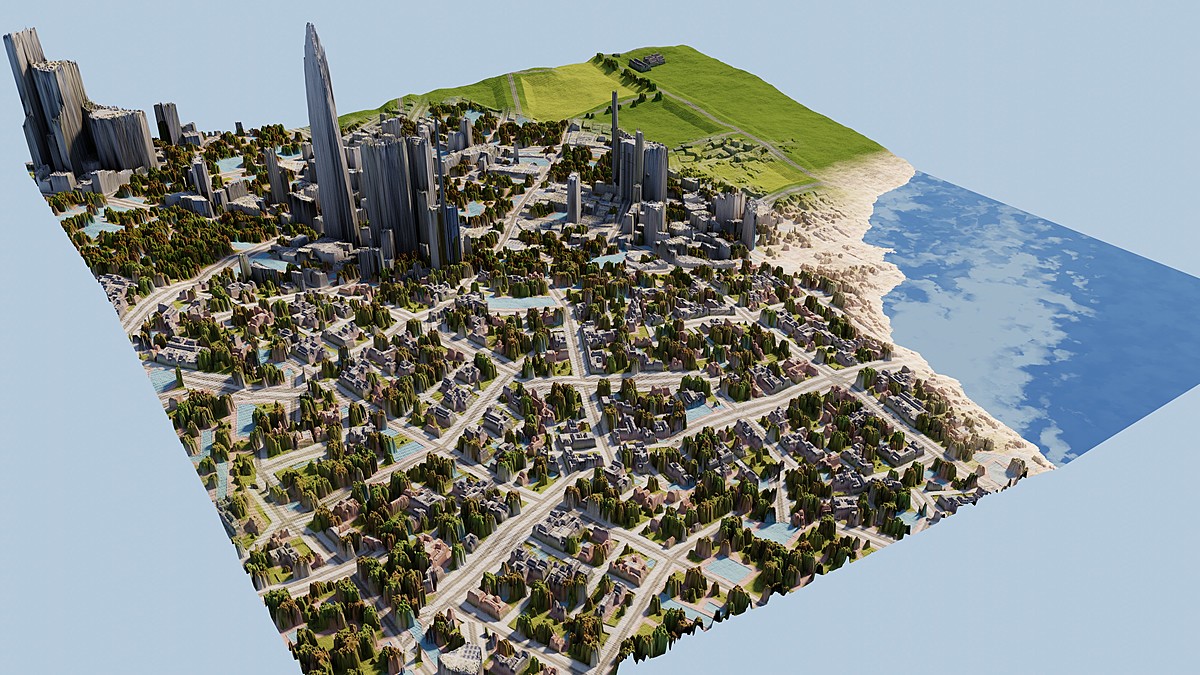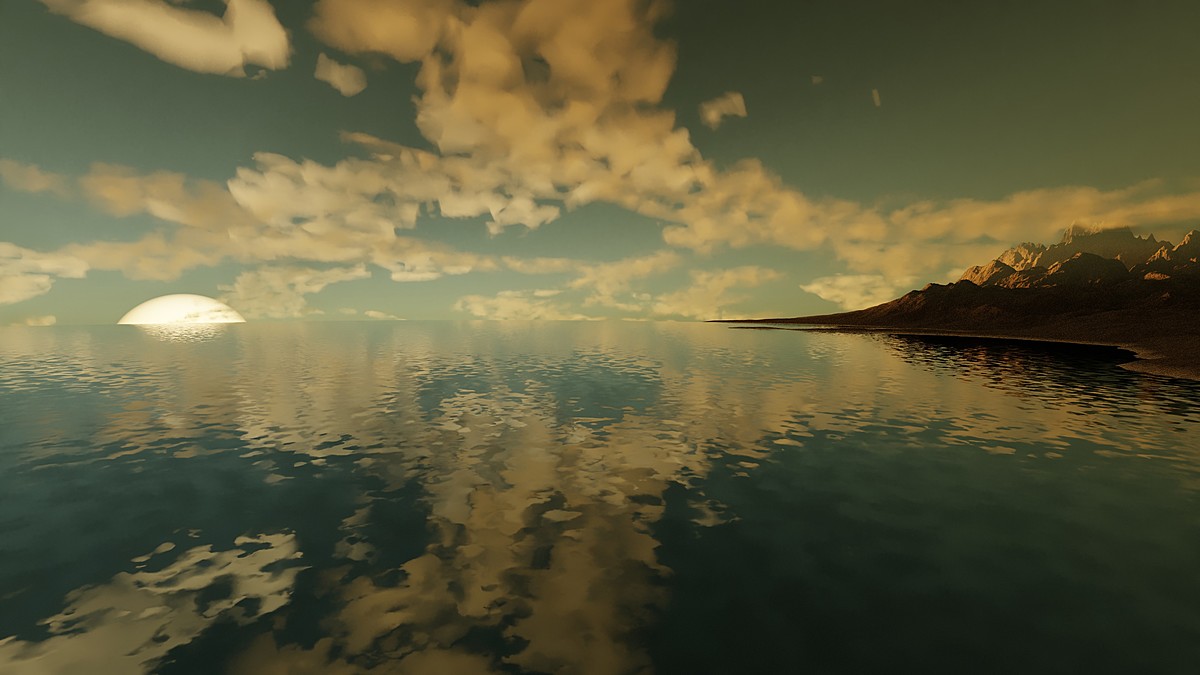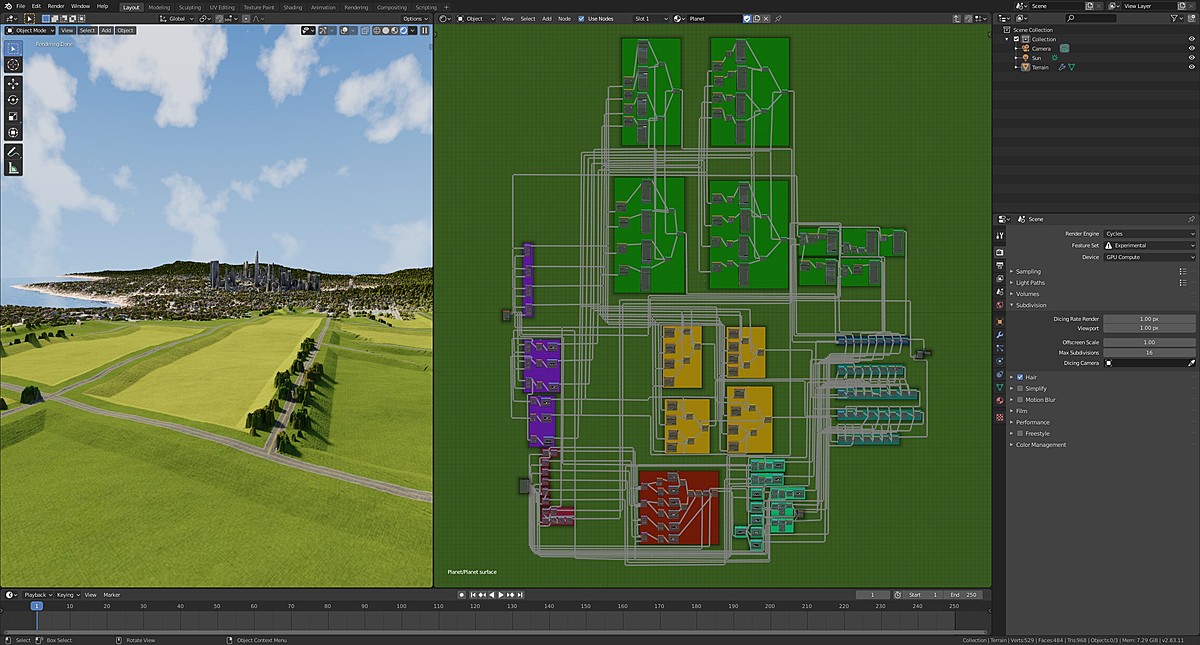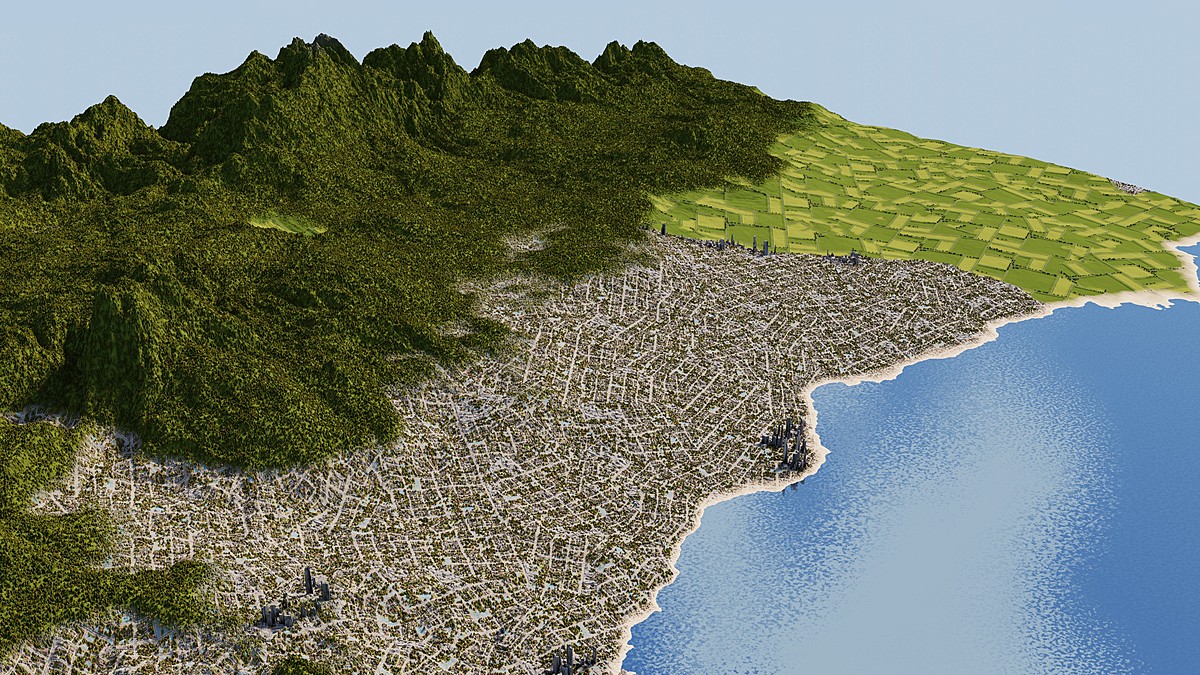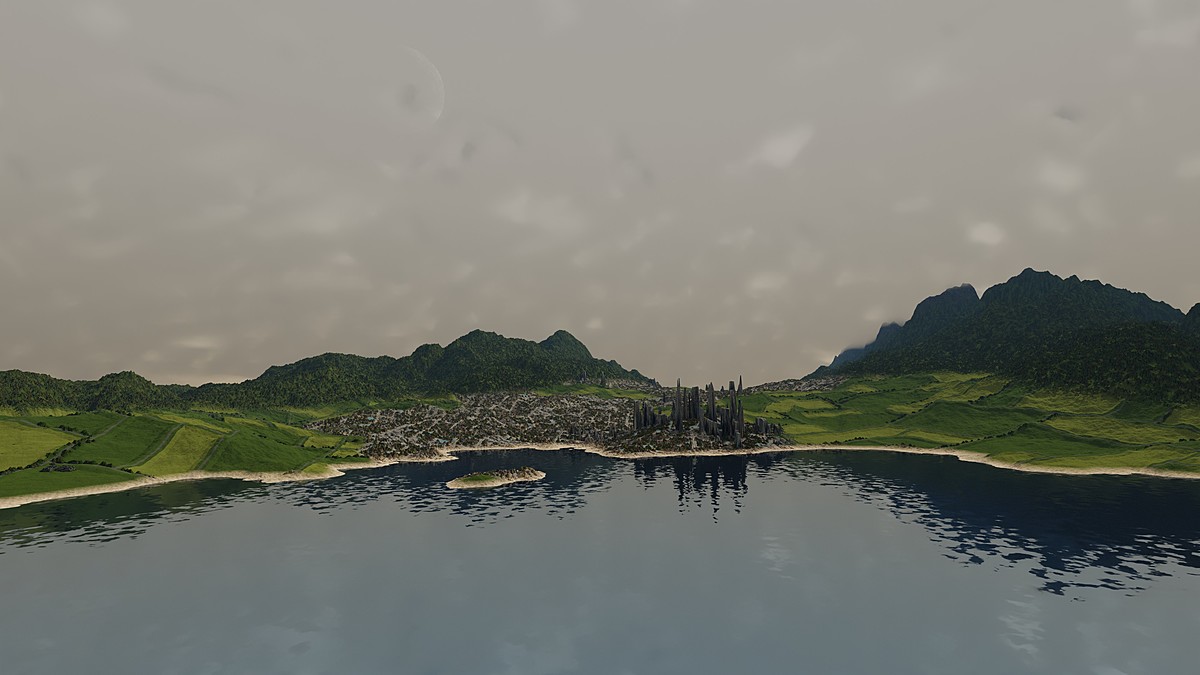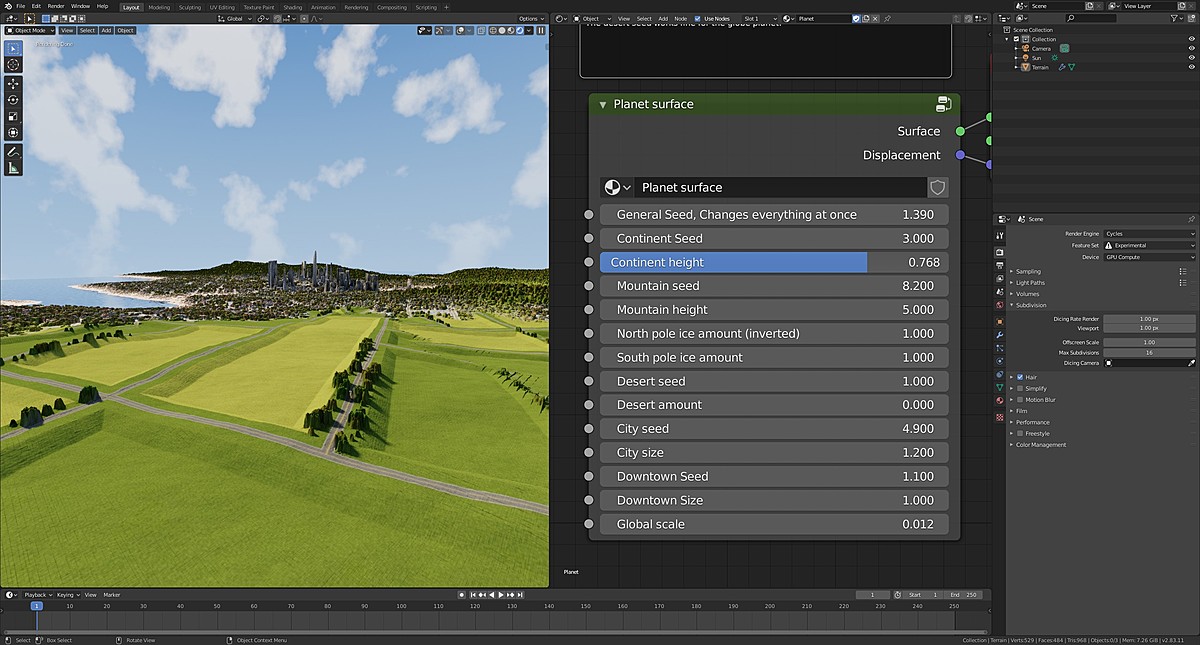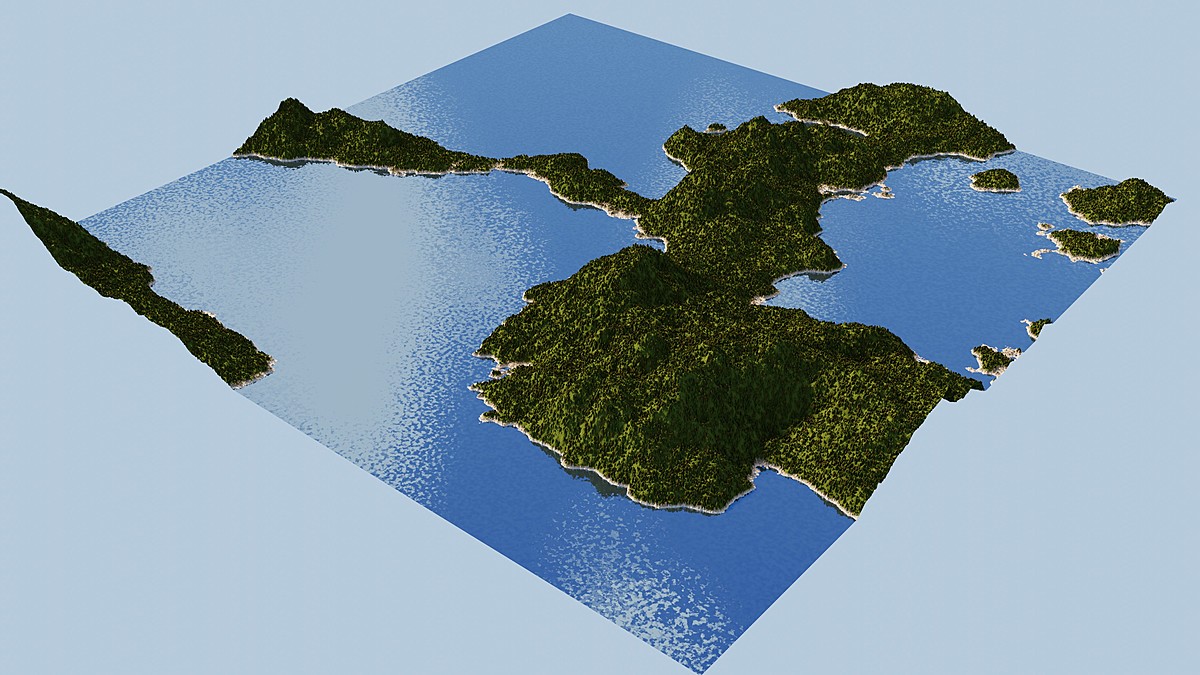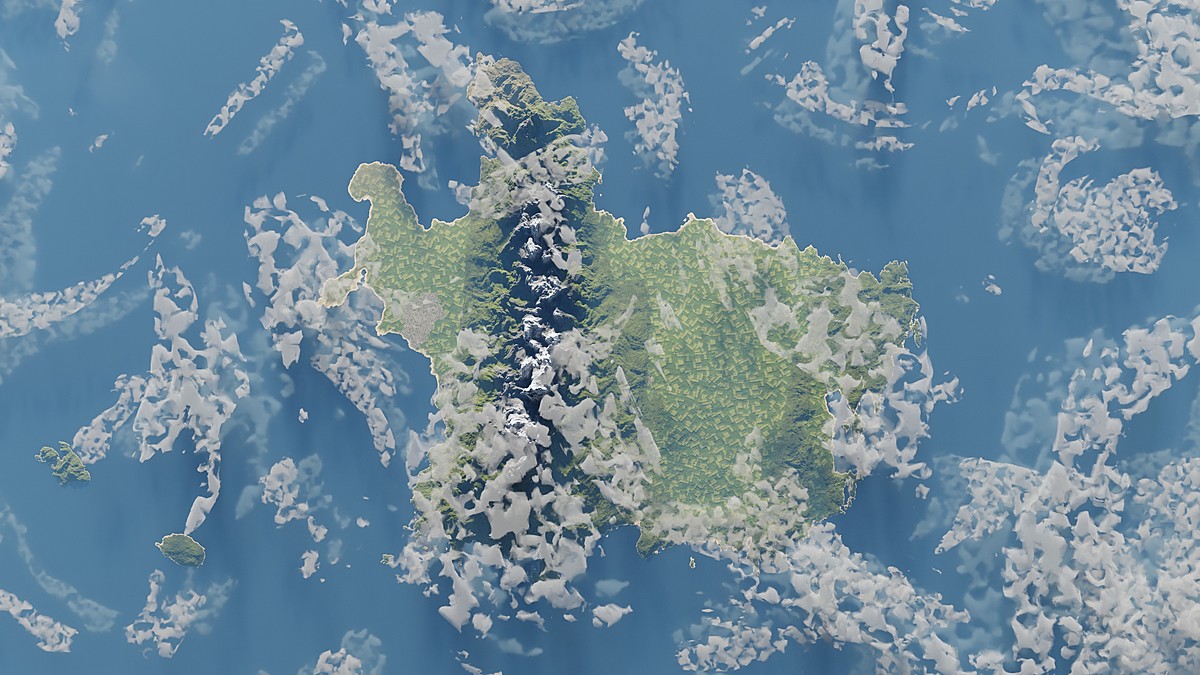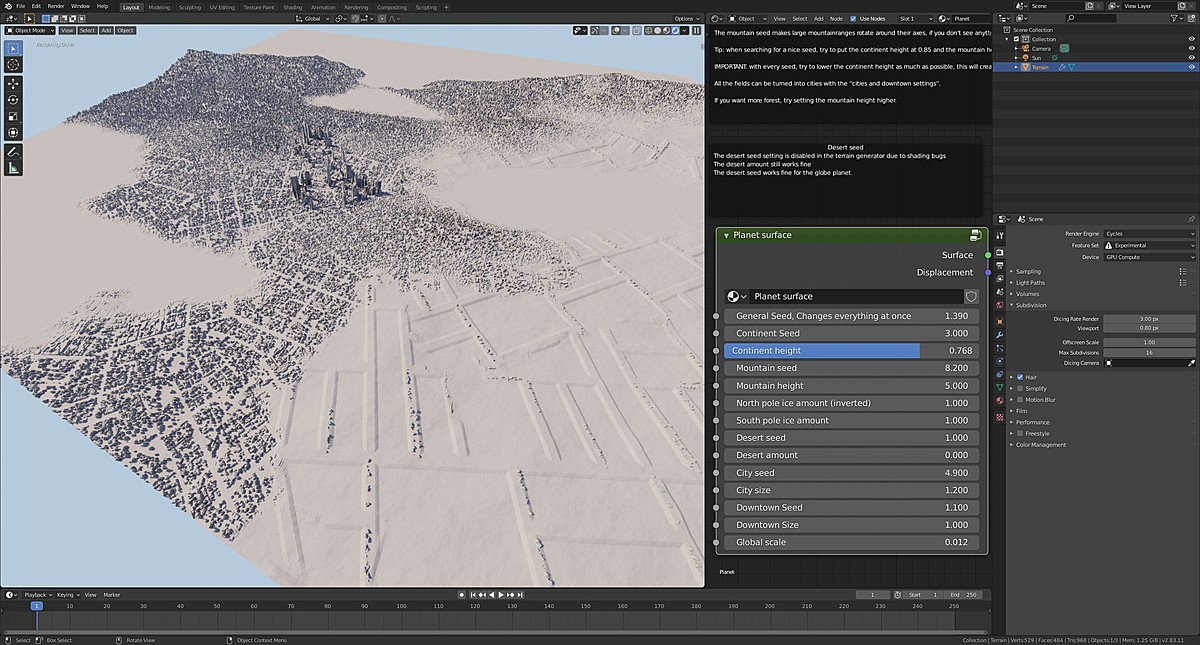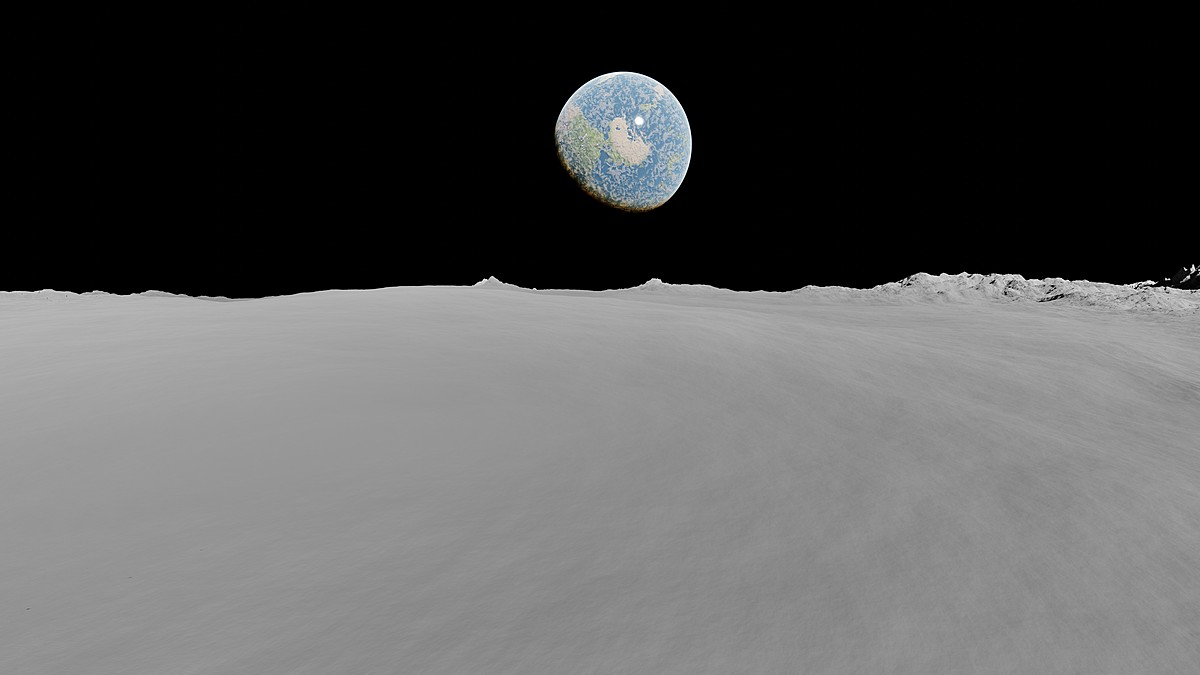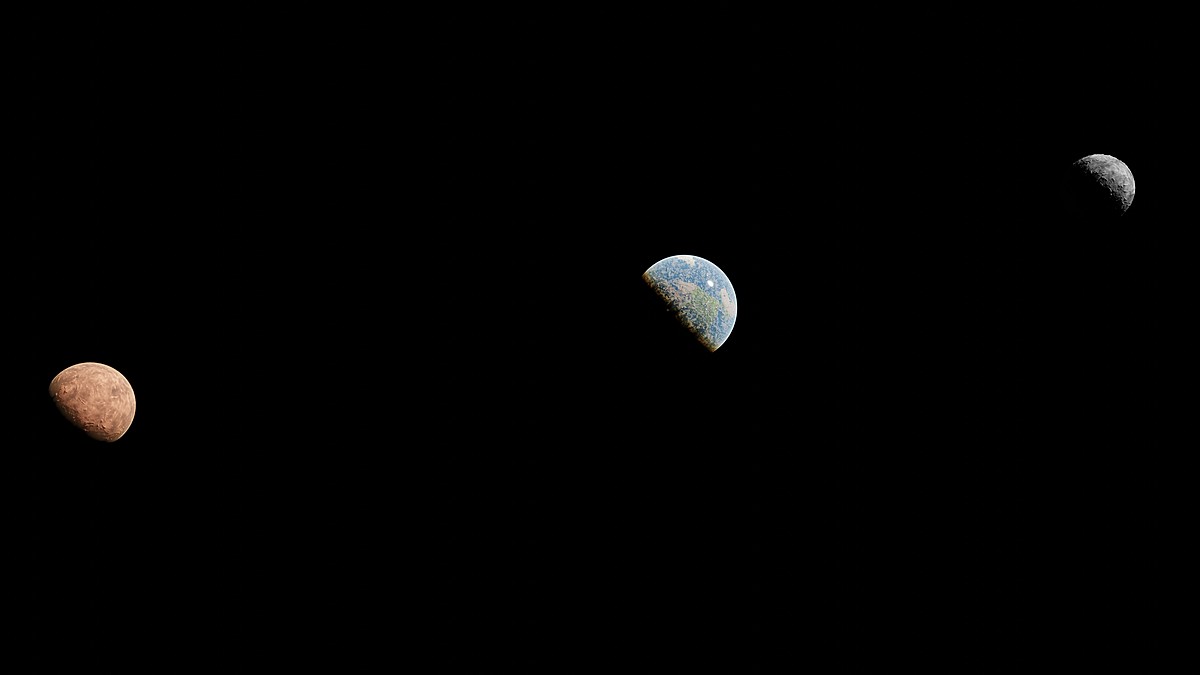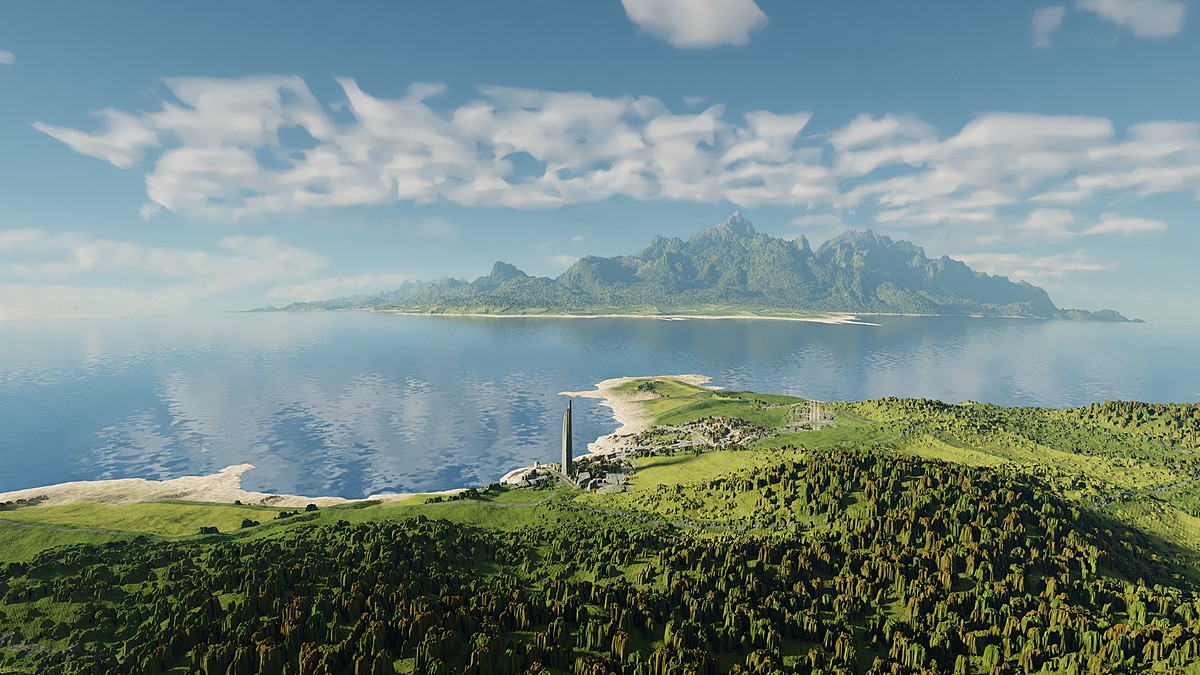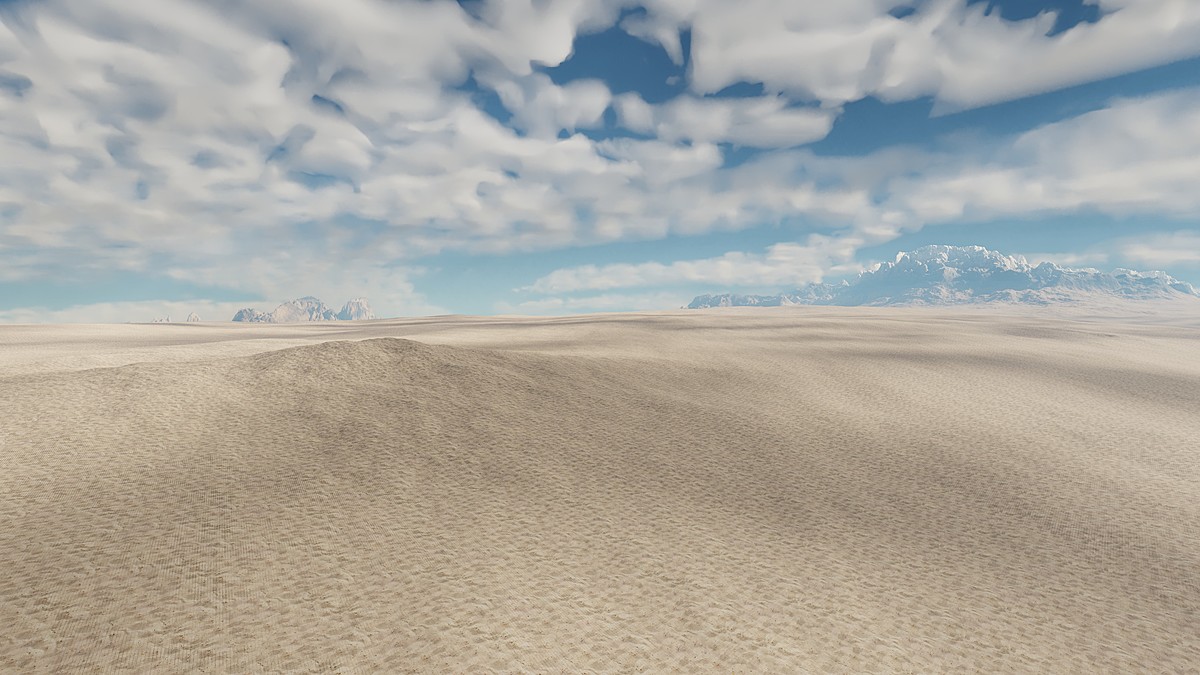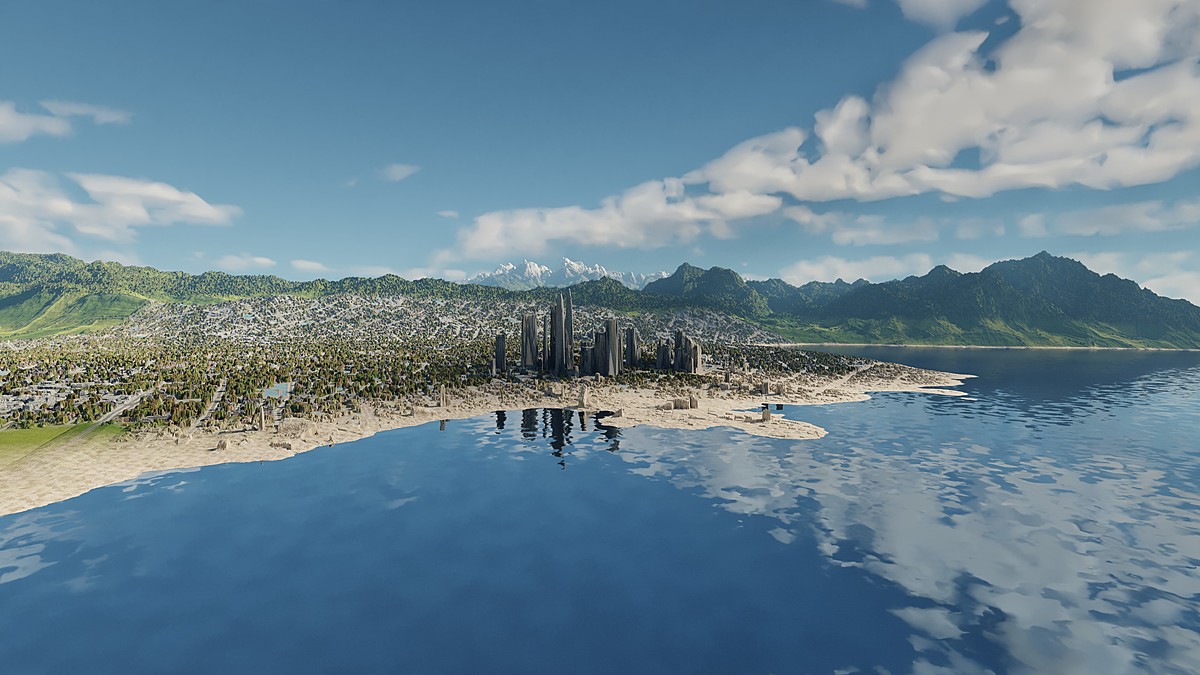Procedural Planet And Terrain Generator With 3D Cities, Forests And Fields
Higher quality planet available aswell:
Planet with terrain: Large Scale Procedural Planet With 3d Cities And Vegetation
Terrain only: Large Scale Procedural Terrain Generator With 3d Cities And Vegetation
This is a procedural planet and terrain generation tool for blender! (developed on blender 2.83.11)
Down below is a instruction discription thats also added as a note in the files.
All images that don't show a flat square plane are actually made on the round planet inside the atmosphere.
This tool comes with 2 blend files:
- A procedural globe with a moon and mars in it's orbit.
- A terrain generator that is able to generate a square part of terrain in any scale.
It is able to randomly generate a seamless globe planet with continents, mountain ranges, deserts, snowy poles and actual 3D cities, forests and farm fields.
Its using a shader node that has 14 sliders to completely set up the scale and type of terrain or planet.
Both the planet and terrain generator use the same node setup
The terrains are generated using a procedural black and white displacement map, mixed shaders and adaptive displacement to create the polygons needed to create the required detail.
This tool is generating terrain using procedural noise, so you get a random result for every seed.
The location and shape of cities and forests are based on procedural noise aswell, but the skyscrapers, residential area, forests and farmfields are displayed using jpeg textures and displacement.
These textures and displacements are made with the assets from my modular city project.
the jpeg textures for the skyscrapers, residential area, forests and farmfields use several randomly mixed vectors to remove tiling effects and give the whole result a more organic look.
The atmosphere of the planet is a volume that creates the blue sky for renders from the surface and automaticly gets red when the sun is low.
The clouds are on 2 layers and use a procedural volumectric setup aswell
This tool can be used for:
- High altitude renders (for airplanes for example)
- Creating terrain for backgrounds
- Seamless animations that go from low altitude into space
- outer space renders
- HDRI creation
- baking a terrain displacement map (the displacement output has to be connected to the diffuse output and you would need to create a 2nd UVmap to bake it on).
The images are orginally 4K renders took about 15 to 20 minutes on a RTX2070 for the planet (the flat texture generator renders are much quicker)
The video features 1080p 32 sample frames that took about 1 minute and 40 seconds per frame
The images that orginally are 4K are possible on a system with 16GB ram
_____________________________________________________
Instructions (also in files folder)
--These instructions are mainly for the flat terrain generator, but also apply to the spherical planet.--
You won't need any plugins, it runs on default blender. the files are developed on Blender 2.83.11
This tool only works with Cycles.
Using eevee isn't recommended, the displacement won't work and you get alot of lag because of the complex node setup.
_______________
With default settings (for 1920x1080 renders) the planet and the terrain generator use about 5gb of ram for a render
-Using a higher focal length for the camera uses more ram (since terrain thats far away appears larger and will get more geometry by the adaptive subdivision)
-Using a higher resolution for renders will use more ram (since the adaptive subdivision is based on the amount of pixels)
-Using a lower dicing rate for the subdivision will use more ram (since the dicing rate determines how much geometry each pixel will get)
________________
The desert seed setting is disabled in the terrain generator due to shading bugs
The desert amount still works fine
The desert seed works fine for the globe planet.
________________
The terrain generator uses adaptive subdivision by default. it creates polygons based on the distance of the viewer, if the scene's details appears to be too low, try to get out of the rendered viewport and intialise the rendered viewport again.
If you want to see changes happen more quickly, try turning off the subdivision modifier in the viewport
The seed changes alot even if you change it by 0.01
if you set the global seed above 5 or below -5, glitches start to appear
If you can't find the right seed between 5 or -5, try to change the continent seed instead
If you see alot of water at your current seed, try to higher the continent height, if you still only see water, try another seed
The mountain seed makes large mountainranges rotate around their axes, if you don't see anything change, it's probably because you are at a really low global scale.
Tip: when searching for a nice seed, try to put the continent height at 0.85 and the mountain height at 5 or lower, this way you have less chance to get water-only seeds, but still have plenty of flat land to generate cities and fields.
IMPORTANT: with every seed, try to lower the continent height as much as possible, this will create more dynamic landscapes in combination with water and the displaced polygons will be closer to the orginal plane, this way the subdivision surface will work better
All the fields can be turned into cities with the ''cities and downtown settings''.
If you want more forest, try setting the mountain height higher.
To find the nice terrain that fits your needs, it's just a matter of taking time to try out different combinations of seeds and settings. it's a totally random system based on noise.
Feel free to change or use the node setup in any way.
